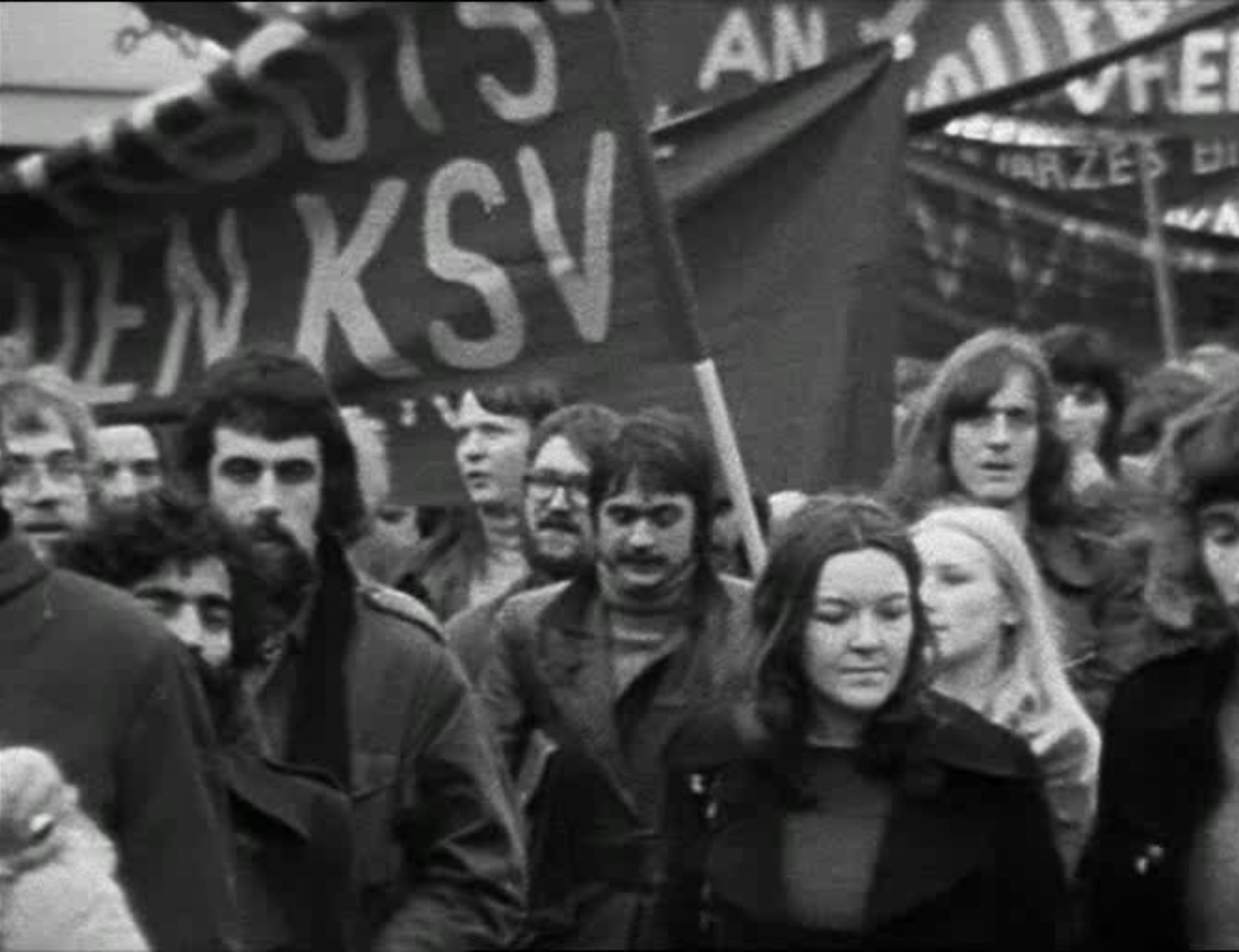Theorist, film scholar, and artist Evan Calder Williams has a new book out entitled Shard Cinema (Repeater Books), about “how moving images have changed in the last three decades and how they changed us along with them.” The New Inquiry has published an excerpt from the book, which examines two films (one made by Alexander Kluge in collaboration with Edgar Reitz) based on squatting and housing struggles in Hamburg in the 1970s. As Williams writes, the unusual cinematography of these films makes it impossible to regard the movie camera an a neutral observer, instead revealing the situated and partisan nature of the camera’s perspective. Check out a snippet of the excerpt below:
It was on this combative terrain that Alexander Kluge and Edgar Reitz would make In Danger and Distress The Middleway Spells Certain Death, with specific focus on the Frankfurt Häuserkampf (housing battle) of February 1974, zeroing in on the violent eviction of one of those squats prior to the demolition of the building itself, as if to scrub the ground clear of any trace of social possibility. The film is a slippery, fundamentally dialogic hybrid that combines documentary footage of militant resistance and public outrage with the ambulatory wandering of Inge Maier (a prostitute who steals the wallets and cars of her clients), interviews and meetings debating the transformation of Frankfurt’s housing market, preparations for the city’s annual carnival, and a loopy espionage plot that turns on an East German communist spy who insists that “espionage belongs to the people.” (She writes lyrical reports that her contact derides: But you, you write poetry! It’s too general. But class struggle means facts, not generalities…)
https://thenewinquiry.com/app/uploads/2017/07/in-danger-walking-through-the-riot-800x610.png
What makes the film remarkable, though, is how it never cleanly delineates these threads but instead tangles them, joining the factual with the whimsical, financial speculation with flights of speculative fancy. The film was intended, in Kluge and Reitz’ own words, to produce “proportions rather than statements; an object with which one can argue,” an offer that was certainly taken up, as shooting involved a protracted debate with the squatters whose eviction is filmed, concerning whether or not one can make a film that concerns a struggle that you are not immediately involved in from the start. Perhaps most potently, In Danger enacts this fraught principle of production in front of the lens too, as it intersperses the characters throughout quotidian situations actually happening during the film’s shooting: in an indelible passage, Maier walks, suitcase in hand, through the chaos of the riot following the eviction. The spy, for her part, attends real astronomy lectures, and, at one point, takes a lift high up the outside of the building, looking down and out over the city being transformed by those projects of demolition and construction, surveying it as if a developer or cartographer.
Image: Film still from In Danger and Distress The Middleway Spells Certain Death. Via The New Inquiry.
